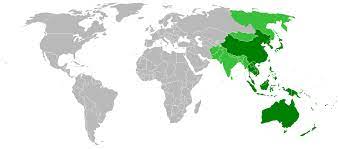The Asian Development Bank (ADB) is an international financial institution that provides development assistance to the Asia-Pacific region. Established in 1966, ADB aims to promote economic growth and social progress in its member countries. In this article, we will discuss the history, objectives, and functions of ADB, as well as its impact on the region’s economic development.

Table of Contents
History of ADB
The idea of establishing ADB was first proposed in 1963 during a meeting of the United Nations Economic Commission for Asia and the Far East (ECAFE). In 1965, representatives from 31 countries signed the ADB’s charter, and the bank began operations in 1966. The ADB’s headquarters are located in Manila, the Philippines.
Objectives of ADB
The primary objective of ADB is to foster economic growth and social progress in the Asia-Pacific region. To achieve this goal, ADB provides development assistance to its member countries in the form of loans, grants, and technical assistance. ADB also promotes regional cooperation and integration, which helps to create a more stable and prosperous region.

Functions of Asian Development Bank
ADB provides a range of financial and technical assistance to its member countries. Some of the key functions of ADB are:
- Providing loans and grants: ADB provides loans and grants to its member countries for various purposes, including infrastructure development, education, healthcare, and poverty reduction.
- Technical assistance: ADB provides technical assistance to its member countries in the form of expert advice, training, and capacity building. This helps to improve the quality of projects and programs implemented by the countries.
- Private sector operations: ADB also supports private sector development in the region by providing financing, equity investments, and technical assistance to private sector companies.
- Knowledge sharing: ADB collects and disseminates knowledge and information on development issues in the region, helping to promote best practices and knowledge sharing among its member countries.
Impact of Asian Development Bank
ADB has played a crucial role in the economic development of the Asia-Pacific region. Some of the key areas where ADB has made a significant impact are:
- Infrastructure development: ADB has funded numerous infrastructure development projects in the region, including roads, bridges, railways, airports, and ports. This has helped to improve connectivity and trade among countries in the region.
- Poverty reduction: ADB has also supported poverty reduction programs in the region, including microfinance initiatives, rural development programs, and social safety net programs.
- Environmental sustainability: ADB has been at the forefront of promoting environmental sustainability in the region, supporting projects and programs that promote renewable energy, energy efficiency, and sustainable transport.
- Private sector development: ADB’s support for private sector development has helped to create jobs and promote economic growth in the region.
Conclusion
The Asian Development Bank has been instrumental in promoting economic growth and social progress in the Asia-Pacific region since its establishment in 1966. With its focus on infrastructure development, poverty reduction, environmental sustainability, and private sector development, ADB has made a significant impact on the region’s economic development. As the region continues to face new challenges, such as climate change and the COVID-19 pandemic, ADB’s role in supporting its member countries will remain critical.
Comparison of ADB with IMF
| Factor | Asian Development Bank (ADB) | International Monetary Fund (IMF) |
|---|---|---|
| Purpose | Promote economic growth and social progress in the Asia-Pacific region | Promote international monetary cooperation, facilitate international trade, and promote economic growth |
| Membership | 68 member countries in Asia and the Pacific region | 190 member countries worldwide |
| Headquarters | Manila, Philippines | Washington, D.C., United States |
| Funding | Loans, grants, and technical assistance from member countries and the bank’s own resources | Contributions from member countries and borrowing from capital markets |
| Focus | Development assistance for member countries in the Asia-Pacific region | Macroeconomic stability and crisis prevention for member countries worldwide |
| Role in crises | Provides development assistance and technical support for economic recovery | Provides financial assistance to countries experiencing economic crises |
| Loan conditions | Loans often have low-interest rates and long repayment periods | Loans come with policy conditions, such as economic reforms and austerity measures |
| Governance | Board of Governors, Board of Directors, and President | Board of Governors, Executive Board, and Managing Director |
| Criticisms | Criticized for lack of transparency and accountability, and for financing environmentally harmful projects | Criticized for imposing harsh economic policies on borrowing countries and favoring developed countries in decision-making processes |
Important Links